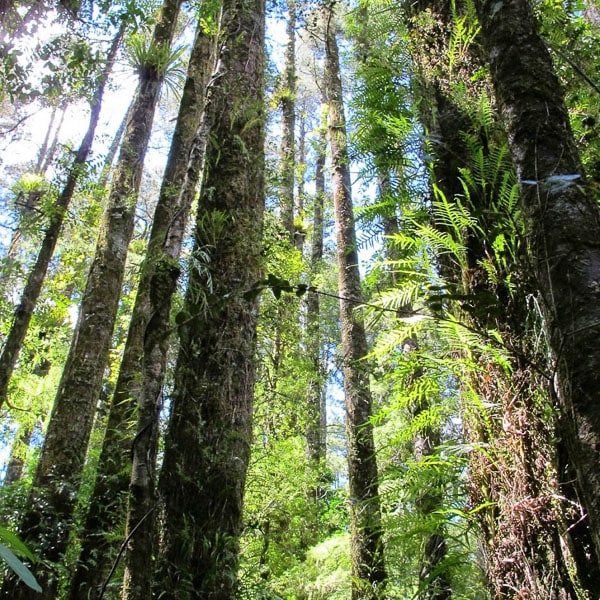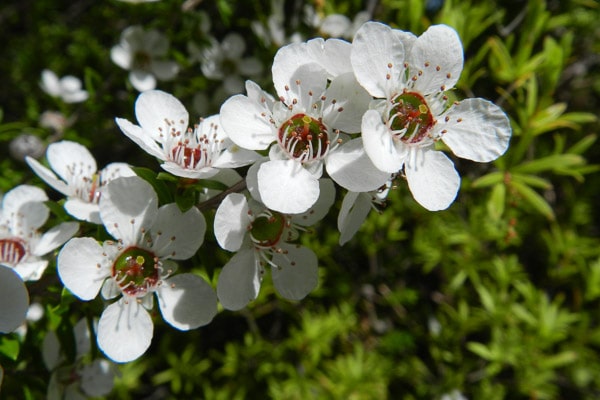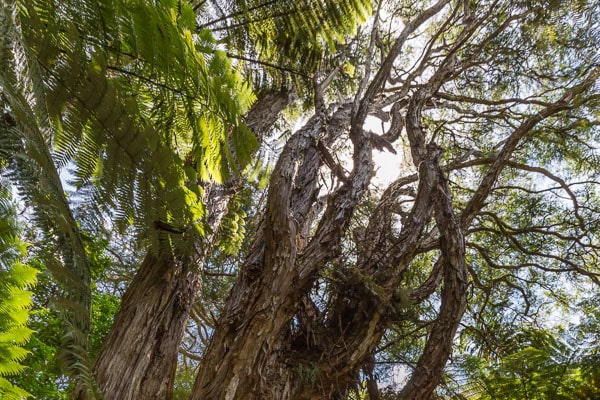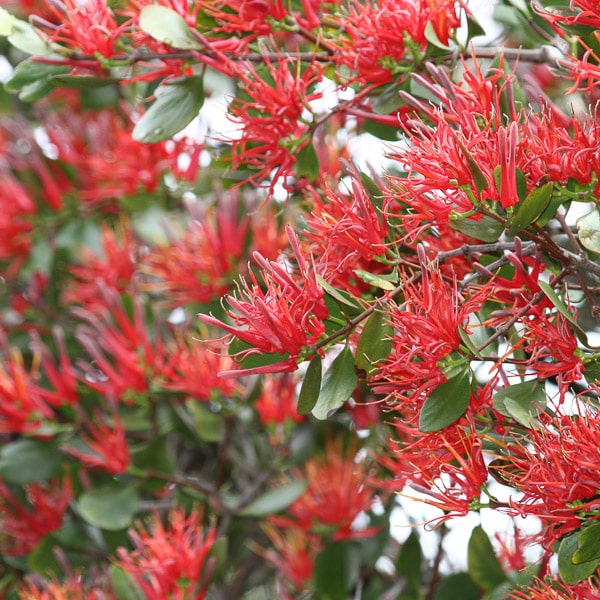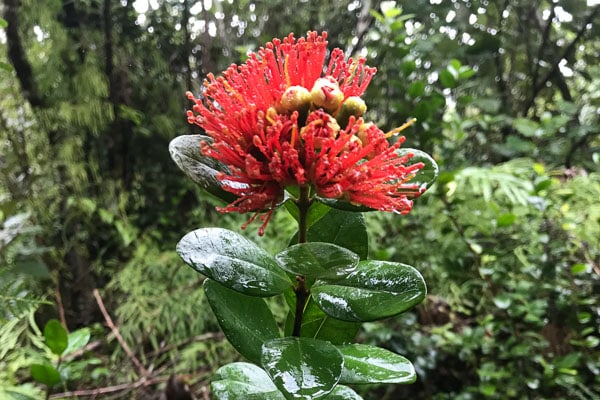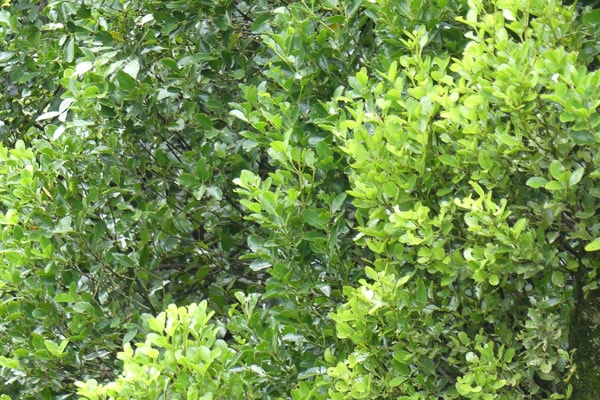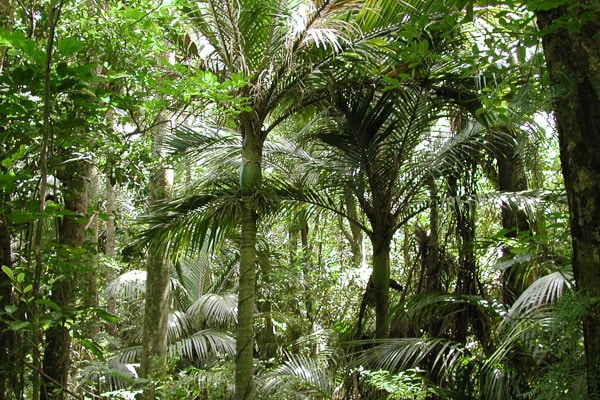
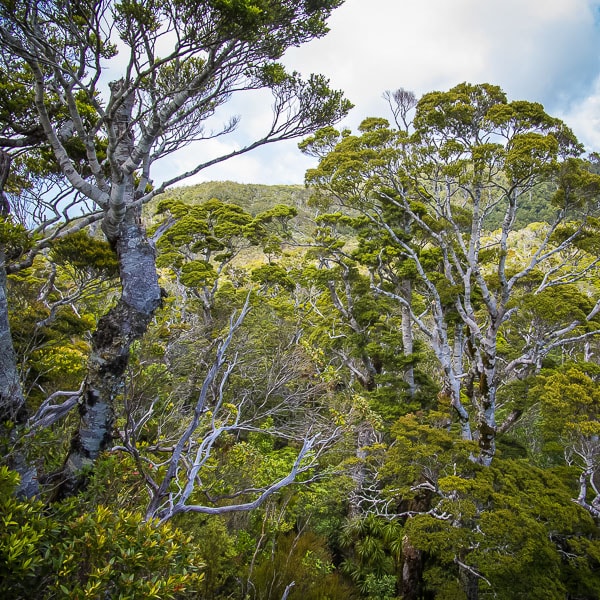
Beech trees
The Abel Tasman is home to all five species of beech trees which all prefer different soil and climate conditions.
Beech trees can produce millions of seeds, and during a heavy seed fall about 50 million seeds (about 250 kg of seeds) will fall per hectare. During a beech seed year predator numbers can increase dramatically because of the abundance of food. Unfortunately, when the beech seeds germinate, the rats turn to native birds for a source of food.
Black beech (Fuscospora solandri)
Black beech is a common lowland species in the Abel Tasman, liking the dry ridges and headlands close to the sea. One of New Zealand’s most beautiful trees, the dusty-green canopy reaching out in picturesque shapes along the rocky coast.
It is named for its black trunk that is caused by a community of several different fungi that form a thick covering over the bark. The fungi grow on the sugar secreted by scale insects underneath that suck juices from the food conducting tissue (phloem) in the trunk. You can see droplets of sugar on thin white filaments which are part of the insect. It is this sugar that is termed ‘honeydew’, a major food for nectar feeding birds like bellbird, but also eaten by honey bees and converted to a rich dark honey.
Old black beech trees have a buttressed base, but most of the trees along the Coastal Track are young. Black beech produces a hard durable timber used in fencing, housing and furniture. At Bark Bay, black beech bark was removed from milled logs, ground up and used to tan fishing nets in Wellington and leather in Nelson.
Mountain beech (Fuscospora cliffortioides)
With increasing altitude black beech gradually changes form into a tough small tree called mountain beech. It grows in the more mountainous areas of the park and on less fertile soil, often forming the tree line at high altitudes.
Hard beech (Fuscospora truncata)
Hard beech is named after its hard wood, and along with black beech is one of the most common forest species in the Abel Tasman. Hard beech has larger, tough, toothed leaves and is found inland where more moisture is available. They are timber trees and produce seeds that are important food for birds like parakeets. It grows in drier places like lower faces and ridges.
Silver beech (Lophozonia menziesii)
Silver beech (named after the silver patches of bark) has small toothed leaves and can be seen on the Tinline bush walk. Silver beech grows in wet places, usually at higher altitude and also along the streams and on shaded lower slopes.
Red beech (Fuscospora fusca)
Red beech is identified by its large sharply serrated leaves. In the park it is mostly found in Canaan and Wainui, higher up the slopes where there is plenty of moisture (lower down in drier places hard beech is dominant).
Photo courtesy of Ruth Bollongino fernphotos.com

